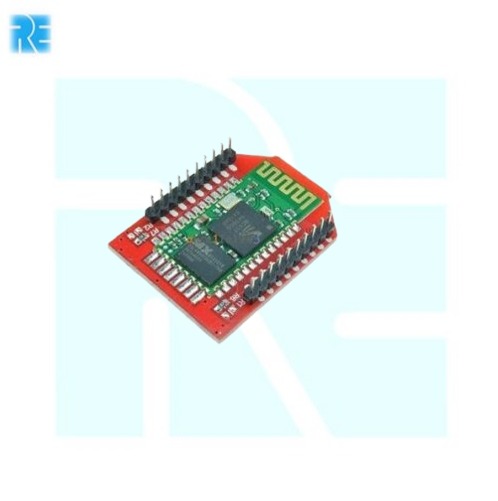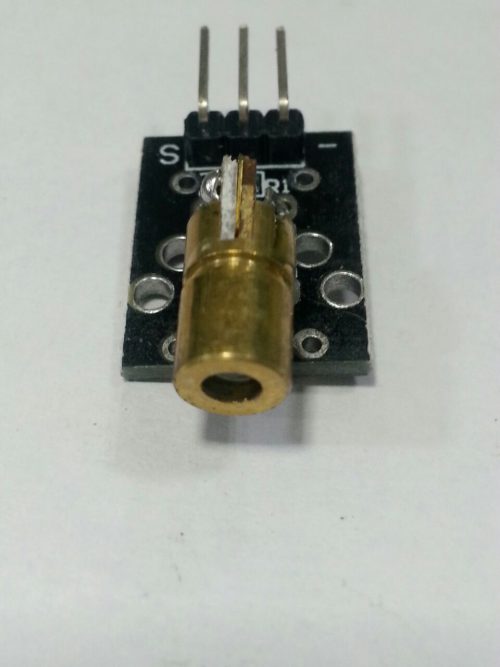-
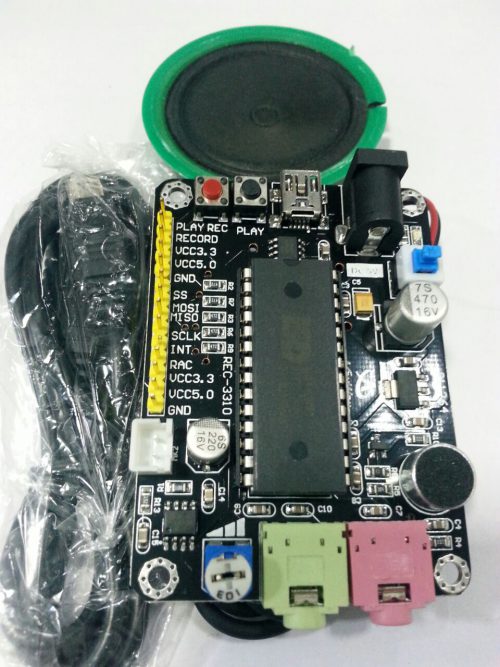 It is the Third recording module developed , this version is distinctly improved in the acoustic fidelity relative to the first and second version.
It is the Third recording module developed , this version is distinctly improved in the acoustic fidelity relative to the first and second version.- Built-in microcontroller serial communication interface
- 3V single-supply operation, low power consumption
- Multi-information processing
- Working current 25-30mA, to maintain current 1μA
- Information is not power to save 100 years (typical)
- High-quality, natural voice reduction technology
- 10 million times the recording period (typical)
- Automatic squelch
- Free adjustment of the clock chip, the external clock can be selected
-
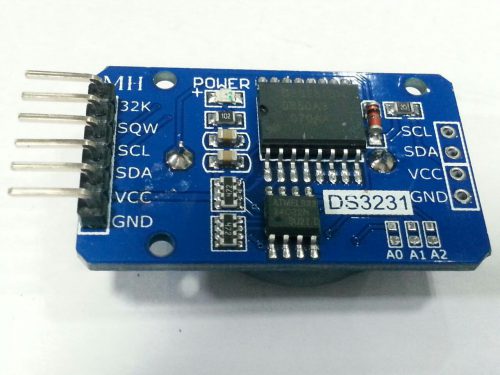 General Description The DS3231 is a low-cost, extremely accurate I2C real-time clock (RTC) with an integrated temperaturecompensated crystal oscillator (TCXO) and crystal. The device incorporates a battery input, and maintains accurate timekeeping when main power to the device is interrupted. The integration of the crystal resonator enhances the long-term accuracy of the device as well as reduces the piece-part count in a manufacturing line. The DS3231 is available in commercial and industrial temperature ranges, and is offered in a 16-pin, 300-mil SMD package.
General Description The DS3231 is a low-cost, extremely accurate I2C real-time clock (RTC) with an integrated temperaturecompensated crystal oscillator (TCXO) and crystal. The device incorporates a battery input, and maintains accurate timekeeping when main power to the device is interrupted. The integration of the crystal resonator enhances the long-term accuracy of the device as well as reduces the piece-part count in a manufacturing line. The DS3231 is available in commercial and industrial temperature ranges, and is offered in a 16-pin, 300-mil SMD package. -
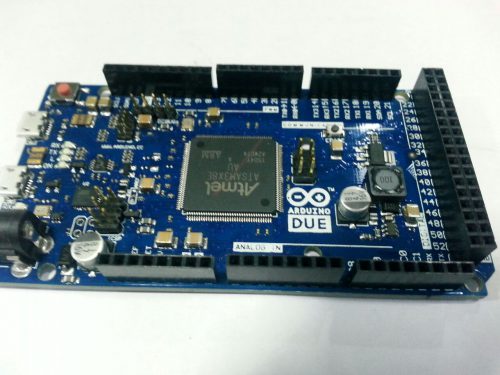 The Arduino Due is a microcontroller board based on the Atmel SAM3X8E ARM Cortex-M3 CPU. It is the first Arduino board based on a 32-bit ARM core microcontroller. It has 54 digital input/output pins (of which 12 can be used as PWM outputs), 12 analog inputs, 4 UARTs (hardware serial ports), a 84 MHz clock, an USB OTG capable connection, 2 DAC (digital to analog), 2 TWI, a power jack, an SPI header, a JTAG header, a reset button and an erase button.Warning: Unlike most Arduino boards, the Arduino Due board runs at 3.3V. The maximum voltage that the I/O pins can tolerate is 3.3V. Applying voltages higher than 3.3V to any I/O pin could damage the board.
The Arduino Due is a microcontroller board based on the Atmel SAM3X8E ARM Cortex-M3 CPU. It is the first Arduino board based on a 32-bit ARM core microcontroller. It has 54 digital input/output pins (of which 12 can be used as PWM outputs), 12 analog inputs, 4 UARTs (hardware serial ports), a 84 MHz clock, an USB OTG capable connection, 2 DAC (digital to analog), 2 TWI, a power jack, an SPI header, a JTAG header, a reset button and an erase button.Warning: Unlike most Arduino boards, the Arduino Due board runs at 3.3V. The maximum voltage that the I/O pins can tolerate is 3.3V. Applying voltages higher than 3.3V to any I/O pin could damage the board. -
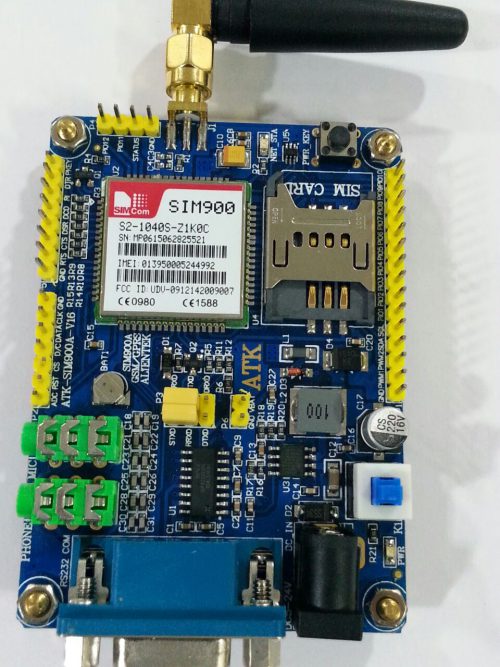 Description: The GPRS Shield is based on SIM900 module from SIMCOM and compatible with Arduino and its clones. The GPRS Shield provides you a way to communicate using the GSM cell phone network. The shield allows you to achieve SMS, MMS, GPRS and Audio via UART by sending AT commands (GSM 07.07 ,07.05 and SIMCOM enhanced AT Commands). The shield also has the 12 GPIOs, 2 PWMs and an ADC of the SIM900 module(They are all 2V8 logic) present onboard.
Description: The GPRS Shield is based on SIM900 module from SIMCOM and compatible with Arduino and its clones. The GPRS Shield provides you a way to communicate using the GSM cell phone network. The shield allows you to achieve SMS, MMS, GPRS and Audio via UART by sending AT commands (GSM 07.07 ,07.05 and SIMCOM enhanced AT Commands). The shield also has the 12 GPIOs, 2 PWMs and an ADC of the SIM900 module(They are all 2V8 logic) present onboard. -
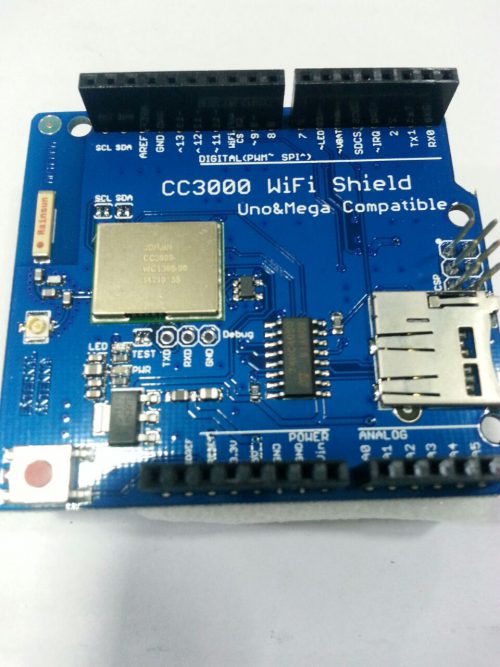 This Arduino shield from Adafruit features TI’s CC3000 Wi-Fi module with an onboard ceramic antenna, a microSD card socket, and a designated prototyping area. The CC3000 uses SPI for communication instead of UART, so the communication speed is not limited to a fixed baud rate. It supports 802.11b/g, open/WEP/WPA/WPA2 security, TKIP, and AES, and a built-in TCP/IP stack with a BSD socket interface supports TCP and UDP in client and server mode with up to 4 concurrent socket connections.
This Arduino shield from Adafruit features TI’s CC3000 Wi-Fi module with an onboard ceramic antenna, a microSD card socket, and a designated prototyping area. The CC3000 uses SPI for communication instead of UART, so the communication speed is not limited to a fixed baud rate. It supports 802.11b/g, open/WEP/WPA/WPA2 security, TKIP, and AES, and a built-in TCP/IP stack with a BSD socket interface supports TCP and UDP in client and server mode with up to 4 concurrent socket connections. -
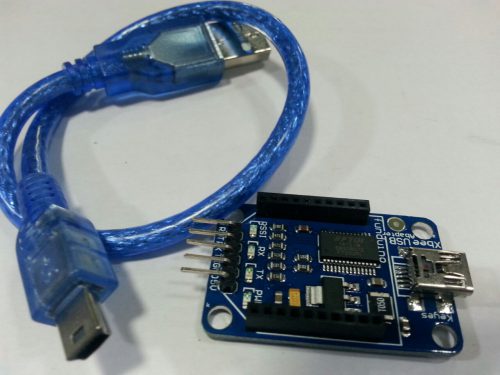 Bee Adapter is a compact USB to serial adapter equipped with BEE (20pin 2.0mm) sockets. With integrated FT232RL IC, It can be used for programming or communicating with board which basic Arduino but without USB interface,like Sniffer Nano. On the other hand, you may connect your PC to various wireless applications via the BEE compatible modules. The adapter also support XBee module interface.
Bee Adapter is a compact USB to serial adapter equipped with BEE (20pin 2.0mm) sockets. With integrated FT232RL IC, It can be used for programming or communicating with board which basic Arduino but without USB interface,like Sniffer Nano. On the other hand, you may connect your PC to various wireless applications via the BEE compatible modules. The adapter also support XBee module interface. -
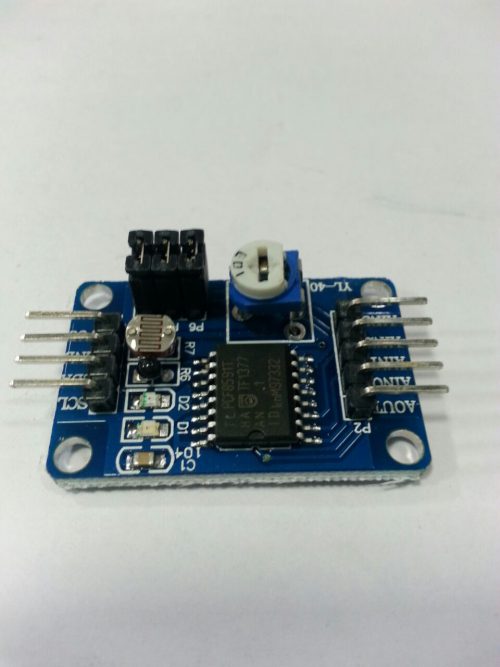 The PCF8591 is a single-chip, single-supply low-power 8-bit CMOS data acquisition device with four analog inputs, one analog output and a serial I2C-bus interface. Three address pins A0, A1 and A2 are used for programming the hardware address, allowing the use of up to eight devices connected to the I2C-bus without additional hardware. Address, control and data to and from the device are transferred serially via the two-line bidirectional I2C-bus.
The PCF8591 is a single-chip, single-supply low-power 8-bit CMOS data acquisition device with four analog inputs, one analog output and a serial I2C-bus interface. Three address pins A0, A1 and A2 are used for programming the hardware address, allowing the use of up to eight devices connected to the I2C-bus without additional hardware. Address, control and data to and from the device are transferred serially via the two-line bidirectional I2C-bus. -
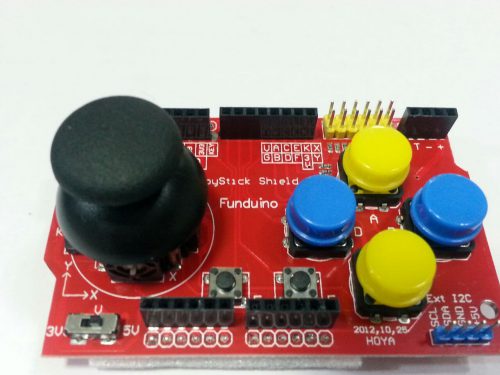 Description: Here we have a Joystick shield that sits atop your Arduino and turns it into a simple controller. 7 momentary push buttons (4 big buttons, 2 small buttons, and a joystick select button) and a two-axis thumb joystick gives your Arduino functionality on the level of the old Nintendo controllers.
Description: Here we have a Joystick shield that sits atop your Arduino and turns it into a simple controller. 7 momentary push buttons (4 big buttons, 2 small buttons, and a joystick select button) and a two-axis thumb joystick gives your Arduino functionality on the level of the old Nintendo controllers.

